It’s all change for Honor at the moment. Once part of Huawei, the brand was spun off into its own company last year to escape the worst impact of a restrictive US trade ban. It’s taken a while, but the Honor 50 is the first phone the company has released globally since striking out on its own.
That means that the Honor 50 is the first Honor phone in some time to ship with full support for Google Mobile Services – but it’s also one of the first Honor phones to use a Qualcomm Snapdragon chipset and to run on software developed at least partly without Huawei’s support.
The good news is that Honor has hit the ground running with a phone that fits right in with its old game plan: flagship design, near-flagship performance, non-flagship price.
Design and build
- Colourful finishes
- Curved display & body
- Dual ring camera
- No waterproofing
In many ways, this is a pretty classic modern slab phone with familiar touches like a curved display, slim bezels, and a reflective rear – all of which help the phone feel premium, but also decidedly Honor.

I’ve been testing the phone’s ‘Emerald Green’ finish, but you’ll also find it in ‘Frost Crystal’, ‘Midnight Black’, and ‘Honor Code’. I’m a fan of the balance the green model strikes between understatement and pizzazz, but it is a fearsome fingerprint magnet, so you may find you want to throw a case on it anyway.
Thanks to the large display this certainly isn’t a small phone, but Honor has kept it light (175g) and slim (7.8mm) so it feels far less bulky than many of its rivals. With the help of the curved display, it actually feels rather slender, so this should be a great choice for anyone who likes small phones in theory but can’t quite resist the allure of a big screen.
The camera module is obviously the other main talking point. Honor says that the dual ring design is inspired by twin-lens reflex cameras, and also compares it unsettlingly to a pair of eyes. I can’t say I love the design, but it is at least memorable and does help the Honor 50 stand out.
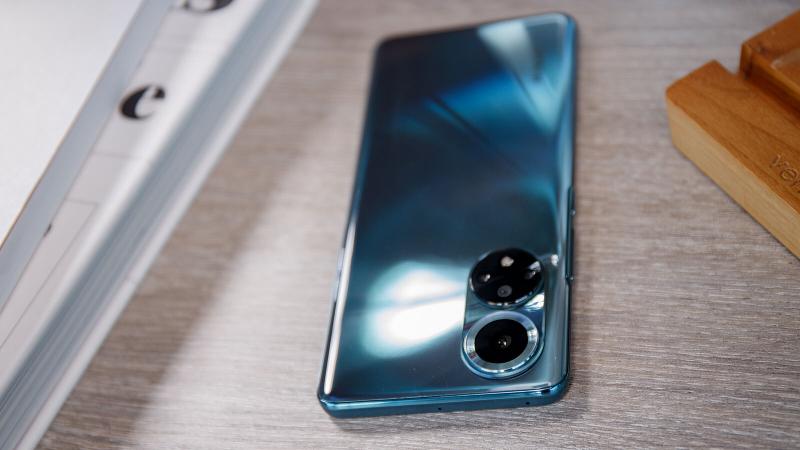
It only stands out so far though, as there’s another phone with the exact same design. It would seem Honor is still working through the release of phones that were designed while Huawei was still paying the bills, as the Honor 50 is the spitting image of the Huawei Nova 9, also launched in Europe this autumn.
The phones have much in common beyond their design, though are ultimately distinct – not least because the Nova 9 can’t access Google apps, including the Play Store, giving the Honor 50 a clear leg up. In design though, there’s really not much to pull them apart other than their finishes, so bear that in mind if it’s the aesthetic that you’re interested in.
Display and audio
- Large 6.57in display
- 120Hz OLED with high colour coverage
- Non-stereo speakers
Mid-range phones have better displays than ever, and fortunately, Honor has managed not only to keep up, but to excel compared to most other phones at this price.
The 6.57in panel here ticks off a whole host of boxes: curved, OLED, Full HD+ resolution, 120Hz refresh rate, 300Hz touch sampling rate, 100% DCI-P3 colour gamut and support for over a billion colours.
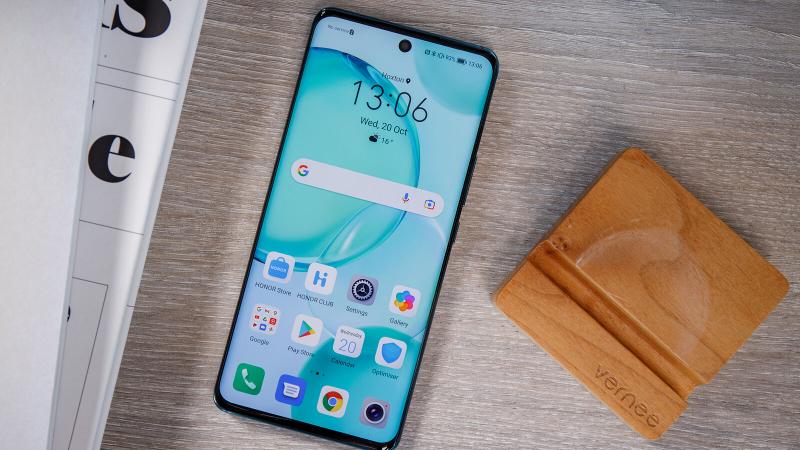
In fact, it would be quicker to list the top specs this screen doesn’t have: there’s no LTPO tech to dynamically alter refresh rate (it can only jump between 60Hz and 120Hz); it doesn’t go up to Quad HD+ or 4K resolution.
Assuming you can live without those two – and really most people should be able to – then there’s no reason not to be happy with the panel here, which is bright, vivid, and colourful no matter what you throw at it.
The display also contains the phone’s under-screen fingerprint reader, which is about as fast and reliable as they come. Face unlock is also available if you prefer, though it’s the relatively unsecure kind driven by the solitary selfie camera found in a central punch-hole.
As with most flagship phones these days, you won’t find a 3.5mm headphone jack anywhere. Instead, you’ll have to make do with USB-C or Bluetooth headphones, or make do with the phone’s respectable speaker sound – though there’s no stereo support.
Specs and performance
- Mid-range – but powerful – Snapdragon 778G chip
- Up to 8GB RAM and 256GB storage
- 5G and Wi-Fi 6
One of the other small compromises in the Honor 50 is on the chipset. You won’t find a flagship 8-series Qualcomm chip here, but instead the mid-range Snapdragon 778G.
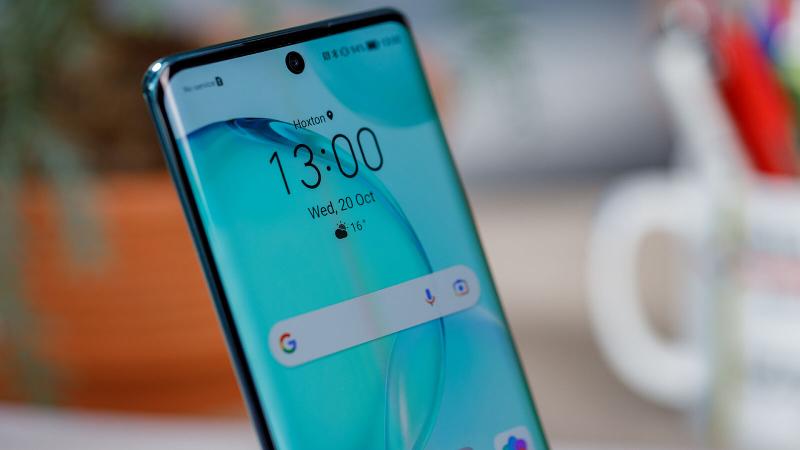
I call this a compromise, but in all honesty, you’re not giving up much here. Even paired with just 6GB of RAM in the model I tested, which comes with 128GB storage, performance was rock-solid throughout my time with the phone and it’ll likely be even better in the 8+256GB version of the handset.
In our artificial benchmarks, the Honor 50 posted similar scores to the Realme GT Master Edition – which uses the same chipset – and on CPU tests came pretty close to some flagship Snapdragon 888-powered devices. Those tended to pull apart further on the GPU-focussed GFXBench tests, but the Honor 50 still performed solidly and will hold its own while gaming.
This is one of Honor’s first phones using Qualcomm silicon, after mostly using Huawei’s own Kirin chips before, and the company has no doubt faced teething pains working around the new hardware.
It says that tech like its GPU Turbo X graphics acceleration have already been adapted for Snapdragon, but it seems plausible – if not guaranteed – that performance here will only improve as Honor’s engineers get more time to optimise the new hardware.
As for connectivity, the Snapdragon 778G does pull its weight here. Along with 5G support you get NFC, Bluetooth 5.2, and Wi-Fi 6.
The long and short of it is that while this certainly isn’t the most powerful phone on the market, it’s no slouch. Factor in the price and the performance here feels truly competitive, with only the likes of the regular Realme GT and a handful of gaming phones delivering more bang for your buck.
Cameras
- Impressive 108Mp main camera
- Forgettable additional lenses
- Strong on selfies
When it comes to camera chops, the Honor 50 is a bit of a mixed bag. It has some undeniable strengths, and for most people, the capable main camera and selfie shooter will be enough to satisfy but the lack of versatility may well frustrate others.
The headline is the 108Mp main lens, which takes up half of the rear camera array all by itself. That’s thanks in part to a large sensor, which helps the lens capture more light for better results in almost all lighting conditions but especially in the dark.
This camera is undeniably capable, and I captured a few lovely shots in my week using the Honor 50. As you’d expect from such a high resolution camera it’s rich with crisp detail, and in good lighting, it produces punchy, vibrant colours.

I’ve been a little more disappointed in performance in dimmer light. Not only is detail lost, but shots often feel grey and washed out, suggesting that Honor has some fine-tuning to do here, though the lack of any physical optical image stabilisation (OIS) is no doubt playing a part too.
It’s been a recent trend to incorporate more and more night mode features into the default shooting mode when it detects low light, but there’s not much sign of that here. That means you will have to remember to switch to night mode in the dark, which produces dramatically improved results. Check out my comparison shots of two identical photos from London’s Leicester Square, one with night mode and one without.
The selfie camera tells a similar story. The 32Mp sensor here is capable of some really rich, detailed shots, but quality drops off even in only slightly dim lighting. The portrait mode produces attractive bokeh, but was a little aggressive on blurring my hairline. The hardware used here is capable enough, so it suggests some algorithmic tweaks are needed to make the most of it.
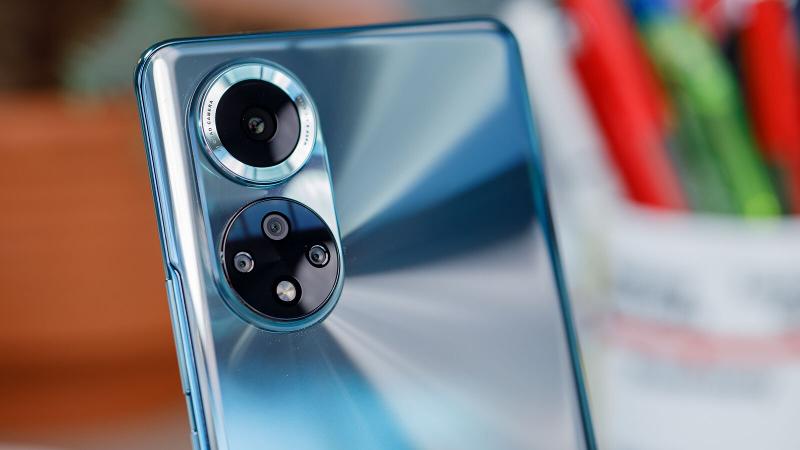
There are three more cameras on the rear to consider, but don’t get too excited – like on many mid-range phones, these seem to have been added mostly to make up the numbers.
The 8Mp ultrawide is a real disappointment, with a chasmic gulf in quality between it and the main sensor. If you really need to shoot wide landscapes it’s an option, but you won’t want to rely on it.
The 2Mp depth sensor will help with portrait mode but isn’t used otherwise, and the 2Mp macro camera isn’t the worst I’ve tested, but like many dedicated macro lenses it feels superfluous – Apple has proven with the iPhone 13 that a strong ultrawide camera with a macro mode is a more effective solution.
One other area that Honor has put work in is the phone’s video capabilities, in an open attempt to court bloggers. In addition to regular video shooting modes, there’s a ‘multi-video’ option that allows you to record split-screen or picture-in-picture video using a combination of the main, ultrawide, and selfie lenses.
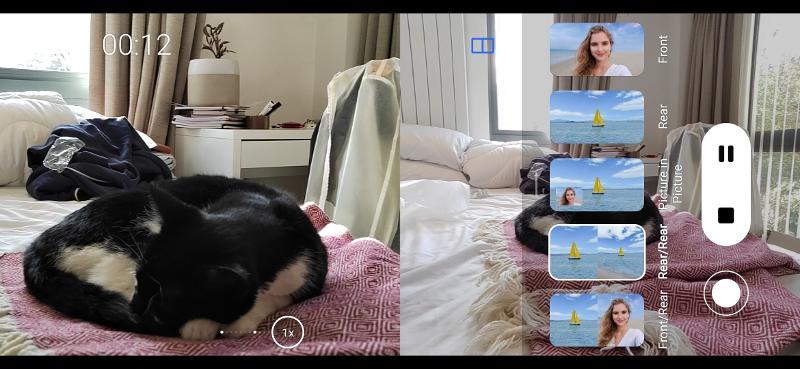
In itself this is nothing new, but the Honor 50 has an interface that makes it impressively easy to switch between camera options (even while recording, albeit with a second-long blurry transition) and capture still shots simultaneously.
There are two big downsides though. First up, the aforementioned lack of OIS means you’ll be able to record more stable video elsewhere. Second, while the main rear camera can shoot [email protected], the front-facing camera is limited to 1080p despite being high-res enough to handle 4K. So while ease-of-use is top notch here, there are some strict limitations on final quality.
Battery and charging
- Decent battery life
- Super-fast 66W wired charging
- No wireless charging
The Honor 50 offers impressive battery life, though it’s not likely to set any records.
Much like many mid-tier Android phones, the 4300mAh battery here will easily last a full day without breaking a sweat, even with 120Hz refresh rate and the always-on display enabled – two of the biggest battery drains around.
Making it to the end of the second day is more of a stretch, but with light use the phone will make it. Of course, that’s with a brand-new review sample, so expect battery life to deteriorate a little over time – but unless you’re an extremely heavy user, I don’t think there’s anything to be concerned about here.
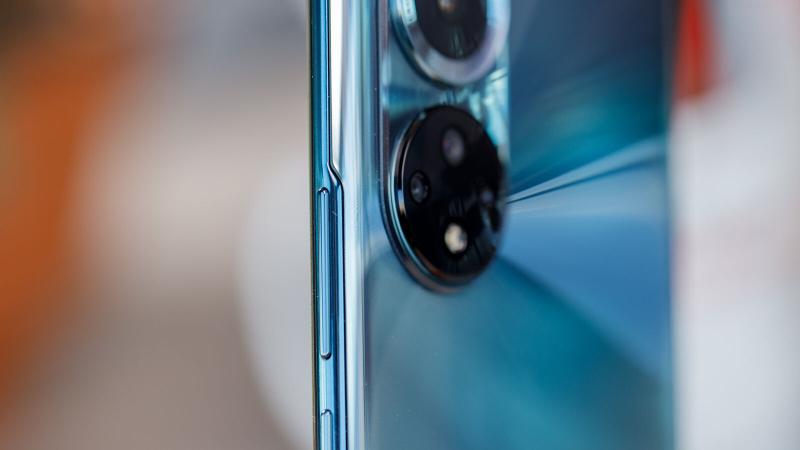
The phone also takes what’s becoming a familiar stance in mid-range Android phones: deliver lightning fast wired charging speeds by ditching wireless entirely.
The 66W wired charger – which is included in the box, don’t worry – topped the phone all the way up to 52% in just 15 minutes in my testing, hitting 83% by the half-hour mark. It takes well below an hour to get a full charge.
It is a shame not to get any wireless charging option now that we’re seeing it work down into other mid-range options like the OnePlus 9 and Pixel 6. Still, those are the exceptions rather than the norm, and the Honor 50 remains cheaper than either of them, which justifies the omission somewhat.
Software and updates
- Full Google support
- MagicUI 4.2 on Android 11
- No update promise
The big news with the Honor 50 isn’t really anything to do with Honor itself, or the phone: it’s the fact that it includes a full, up-to-date version of Android with complete support for Google Mobile Services.
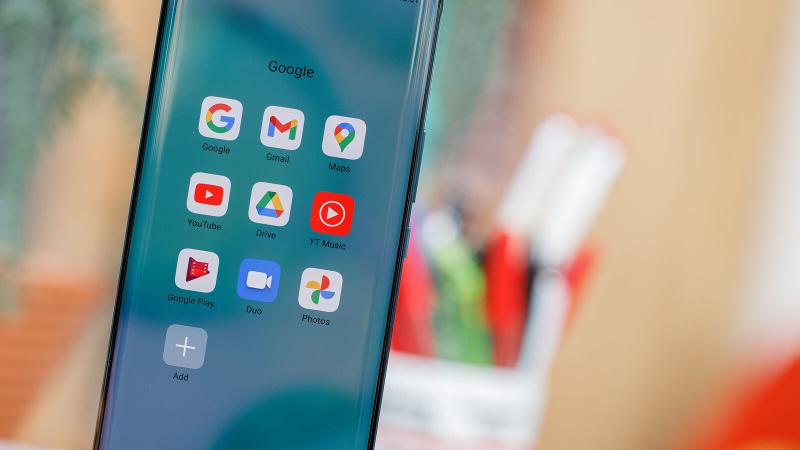
Over the last two years, Honor phones have been subject to the same trade restrictions that crippled Huawei, which prevented the company from licensing Google’s smartphone software. Now that Honor is an independent company, that’s no longer the case.
Yes, this runs Android 11 rather than the latest Android 12, but it’s come out just a little too early to give Honor time to implement that update. Besides, it’s worth it just to boot up an Honor device and see all the standard Google apps pre-installed – including the Play Store for access to the full Android ecosystem.
Honor’s own Magic UI runs on top of Android, and not too much has changed here. The interface will feel pretty familiar to anyone who’s used a Huawei or Honor handset before, with a clean white-and-blue colour palette – I’ll be curious to see how this develops now that Honor is free to design its own software.
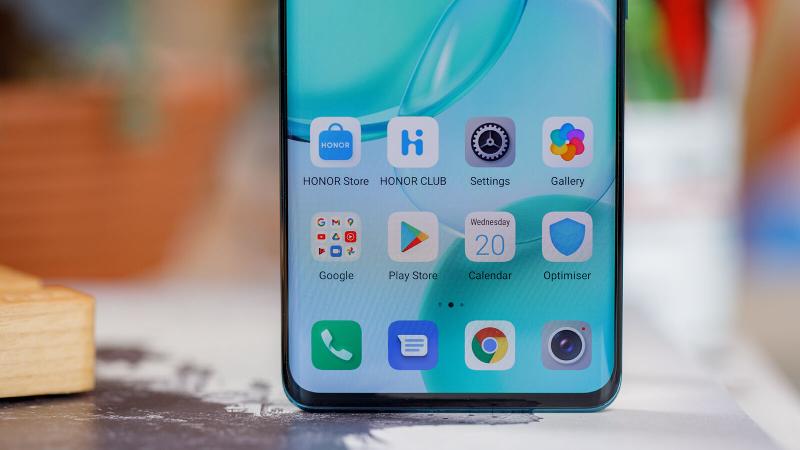
Even the phone’s biggest new software features are clearly hangovers from Huawei. The multi-camera UI discussed above is also seen on the Nova 9 (albeit with some slight variation), as are the Honor 50’s new always-on display options.
These includee a few familiar quirky clocks and text options, but the highlight is new abstract ‘artistic designs’. These echo the ‘Material You’ design language of the new Pixel software…
